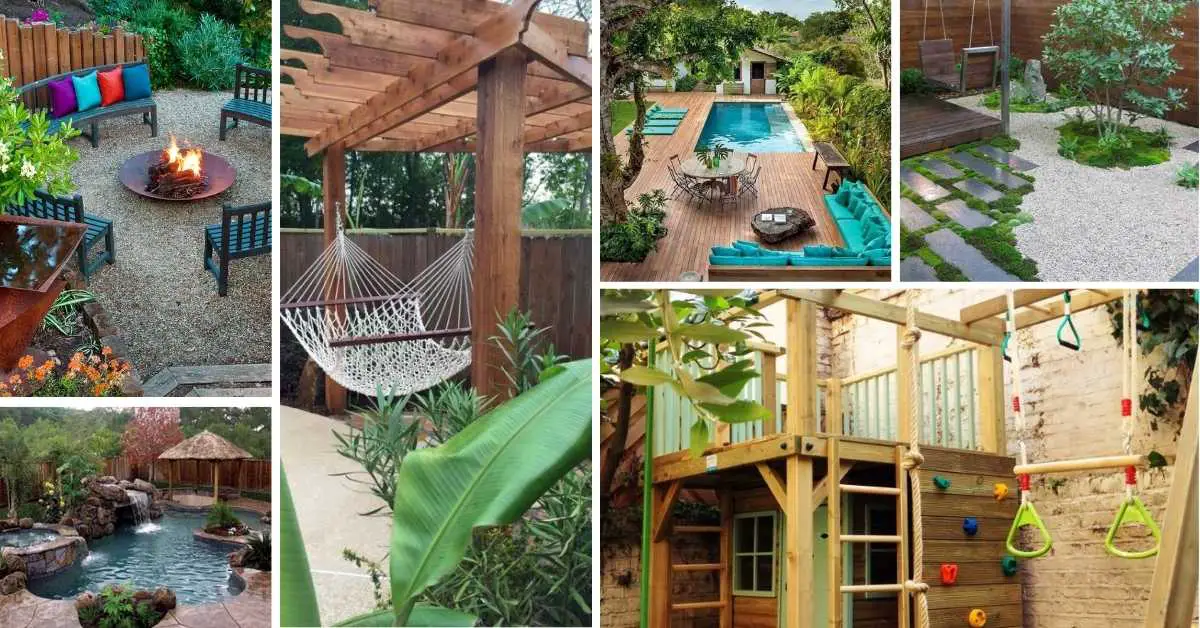In small garden layouts, space is precious. Maximizing every inch can lead to a lush and productive garden, no matter how small your space is.
In this blog post, we’ll explore 11 creative and practical small garden layout ideas that will help you make the most of your garden space. From vertical gardening to container gardening, each idea is designed to be simple, effective, and perfect for beginners or those with limited space.
Whether you have a balcony, patio, or tiny backyard, these ideas will inspire you to create a beautiful and functional garden that suits your needs. Let’s dive in and transform your small space into a green oasis!
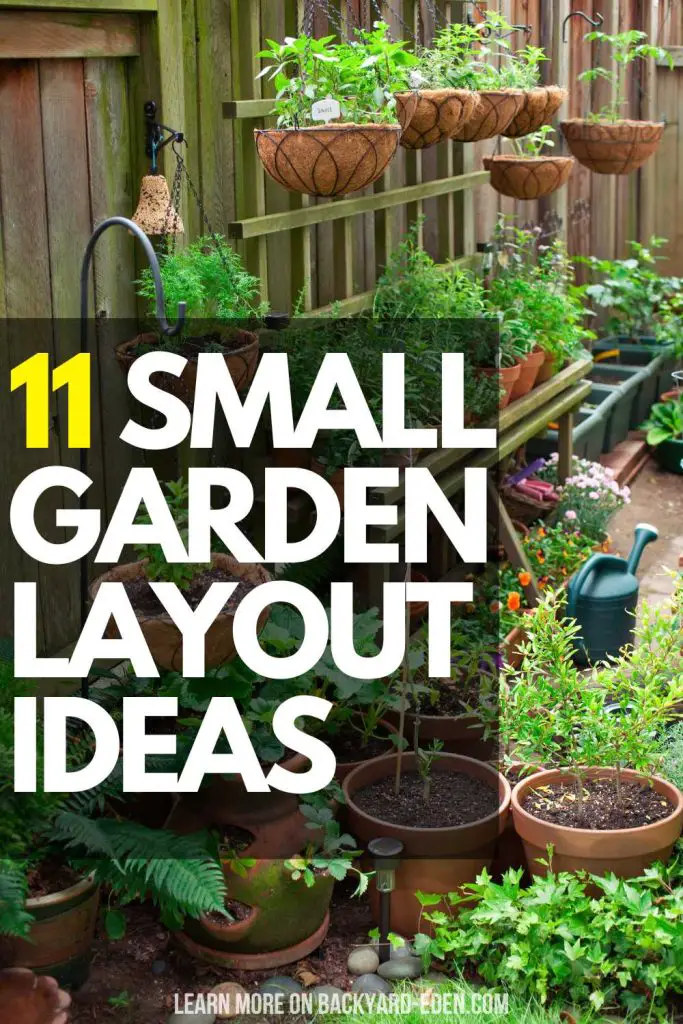
Considering Functionality
When designing your small garden layout, it’s essential to consider the functionality of the space. Think about how you plan to use the garden and what activities you want to accommodate. For example, if you enjoy outdoor dining, you might want to include a small patio or seating area. If you’re a keen gardener, you’ll need space for planting beds or containers.
Additionally, consider the practical aspects of maintenance. Ensure pathways are wide enough for easy access and that any structures or features are easy to maintain.
By considering functionality, you can create a small garden that not only looks beautiful but also meets your practical needs.
Do You Plan on Entertaining People?
If you plan on entertaining people in your small garden, consider incorporating a seating area into your layout. Opt for space-saving furniture such as foldable chairs or benches that can be easily stored when not in use.
You could also create a focal point, such as a fire pit or water feature, to enhance the ambiance of your outdoor space.
Additionally, make sure there is enough space for guests to move around comfortably, and consider adding lighting to extend the usability of your garden into the evening.
With careful planning, you can create a small garden that is both functional and inviting for entertaining.
What Do You Want To Grow?
Deciding what you want to grow in your small garden is a crucial first step in planning your layout. Consider what types of plants you enjoy, whether it’s vegetables, herbs, flowers, or a mix of all three.
Think about the amount of sunlight your garden receives and choose plants that are suitable for those conditions. If you’re new to gardening, start with easy-to-grow plants that are low-maintenance and resilient.
By determining what you want to grow, you can tailor your garden layout to accommodate those plants and ensure they thrive in your small space.
Small Garden Layout Ideas
1. Create a Garden on Wheels
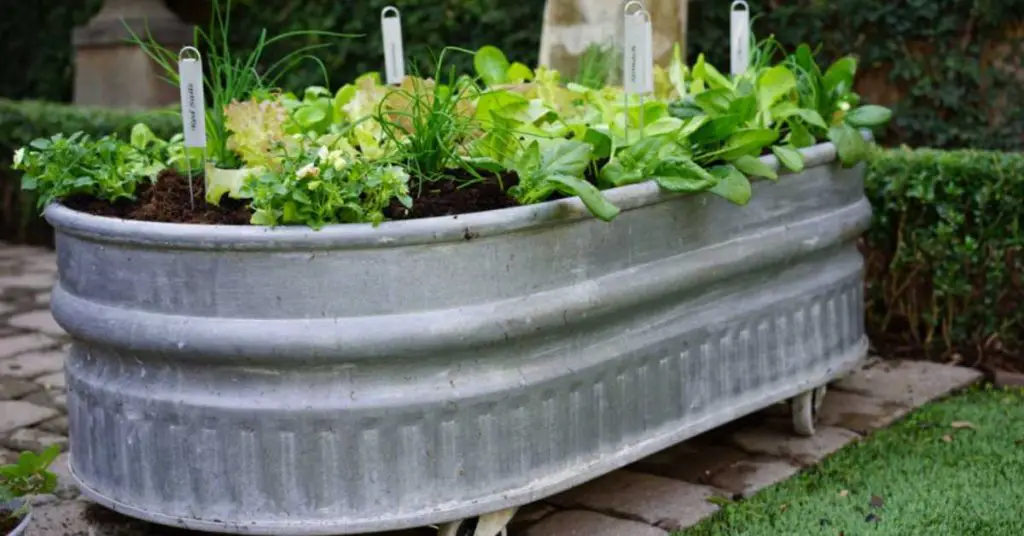
Idea: Create a portable garden using a cart or wagon. This allows you to move your garden to different locations, ensuring your plants receive optimal sunlight throughout the day. It also enables you to make the most of limited space, as you can easily tuck your garden away when not in use.
Why: This idea is perfect for those with small outdoor spaces or renters who may not have permanent garden beds. By using a cart or wagon, you can easily adapt to changing sunlight patterns and weather conditions, ensuring your plants thrive. It also adds a unique and mobile element to your garden, making it a focal point in your outdoor space.
Materials: Sturdy cart or wagon, pots or containers, potting soil, plants.
Instructions:
- Choose Your Cart: Select a sturdy cart or wagon that can hold your pots or containers.
- Prepare Your Containers: Fill pots or containers with potting soil.
- Plant Your Plants: Plant your choice of plants in the pots or containers.
- Care and Maintenance: Water and maintain your plants regularly. Move the cart or wagon to ensure they get enough sunlight.
Tips: Use a cart with wheels for easy mobility. Consider planting a mix of herbs, flowers, and vegetables for a varied and attractive garden.
Can I Use Any Type of Cart or Wagon?
It’s best to use a sturdy cart or wagon with solid wheels that can support the weight of your plants and soil. Ensure that the cart or wagon has enough space to accommodate your pots or containers.
How Often Should I Move the Cart or Wagon?
Aim to move the cart or wagon as needed to ensure that your plants receive adequate sunlight throughout the day. This may vary depending on the sun exposure in your garden.
What Plants Are Suitable for a Garden on Wheels?
Choose plants that thrive in your local climate and consider the amount of sunlight your garden receives. Herbs, flowers, and compact vegetable varieties are excellent choices for a garden on wheels.
Do I Need to Secure the Pots or Containers to the Cart or Wagon?
It’s a good idea to secure the pots or containers to the cart or wagon to prevent them from tipping over. You can use straps, bungee cords, or other securement methods to keep them in place.
2. Use Container Gardening
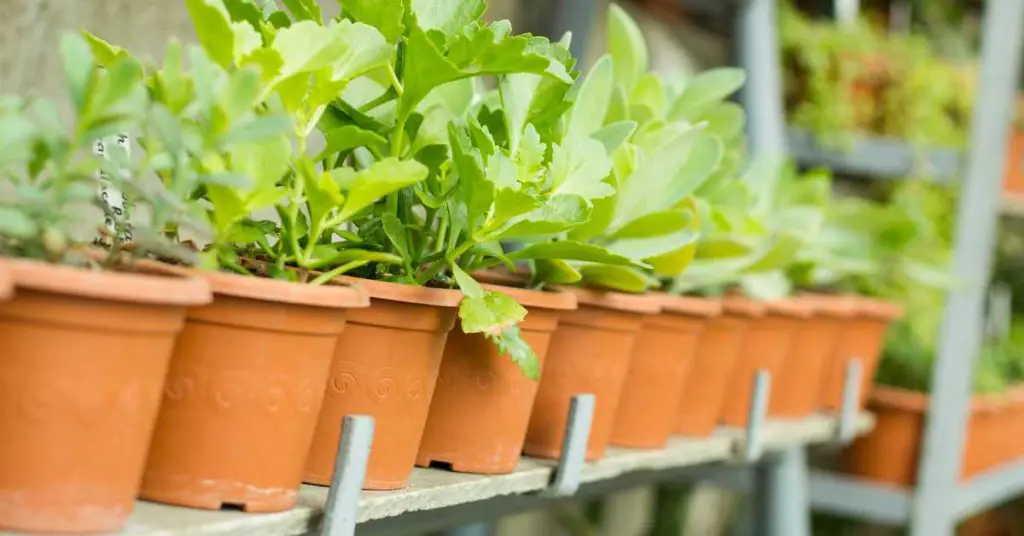
Idea: Grow plants in containers instead of planting them directly in the ground. This allows you to garden in small or unconventional spaces, such as balconies, patios, or even indoors. Container gardening is also ideal for those with limited mobility, as the containers can be placed at a comfortable height for planting, watering, and harvesting.
Why: Container gardening offers several advantages. It allows you to control the soil quality, which is especially beneficial if your soil is poor or contaminated. Containers also provide excellent drainage, preventing waterlogged roots. Additionally, you can easily move containers to optimize sunlight exposure throughout the day, ensuring your plants receive the light they need to thrive.
Materials: Various containers (pots, buckets, troughs), potting mix, plants.
Instructions:
- Choose Your Containers: Select containers that are appropriate for the size and type of plants you want to grow. Ensure they have drainage holes at the bottom.
- Prepare Your Containers: Fill the containers with a high-quality potting mix, leaving a few inches of space at the top for watering.
- Plant Your Plants: Plant your choice of plants according to the planting instructions for each species. Be sure to space them appropriately to prevent overcrowding.
- Care and Maintenance: Water your plants regularly, as container plants tend to dry out faster than plants in the ground. Fertilize as needed, and prune or trim your plants to promote healthy growth.
Tips: Choose containers that complement your space’s aesthetic. Consider using vertical space by hanging containers or placing them on shelving units.
Can I Use Any Type of Container?
You can use a variety of containers for gardening, including pots, buckets, troughs, and even old furniture or tires. Just ensure that whatever you use has drainage holes at the bottom to prevent waterlogging.
How Often Should I Water Container Plants?
Container plants generally need to be watered more frequently than plants in the ground, as they can dry out quickly. Check the soil regularly and water when the top inch feels dry to the touch.
What Plants Are Suitable for Container Gardening?
Many plants thrive in containers, including herbs, flowers, vegetables, and even small fruit trees. Choose plants that are well-suited to your climate and the amount of sunlight your container garden receives.
Can I Move My Containers to Different Locations?
Yes, one of the advantages of container gardening is that you can easily move your containers to different locations to optimize sunlight exposure or protect them from harsh weather conditions.
3. Square Foot Gardening
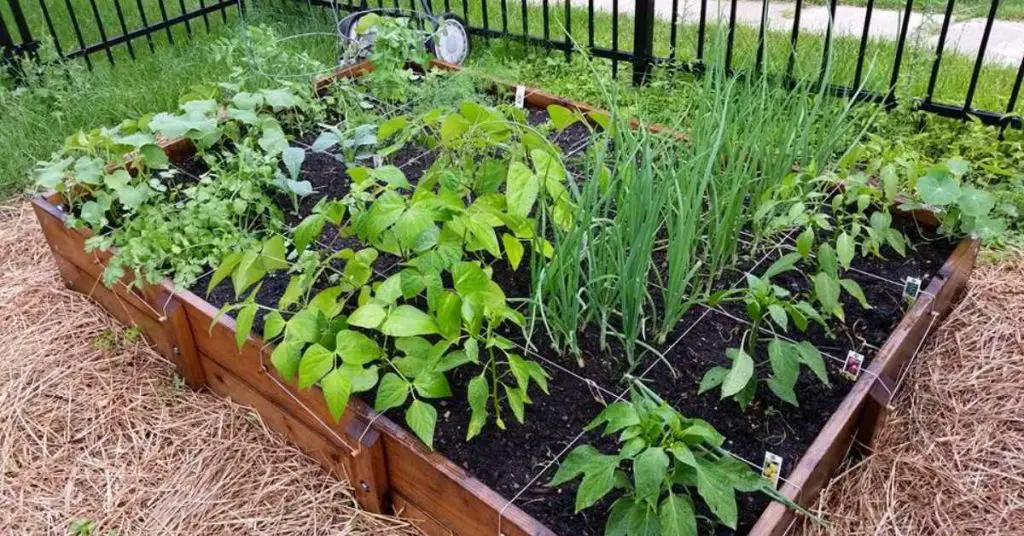
Idea: Square foot gardening is a method of gardening that divides a raised bed into small square sections, typically 1 foot by 1 foot. Each square is then planted with a different type of vegetable, herb, or flower, maximizing the use of space and simplifying crop rotation and plant care.
Why: Square foot gardening is perfect for small spaces because it allows you to grow a variety of plants in a compact area. It also helps prevent weeds and conserves water, as the close spacing of plants shades the soil and reduces evaporation.
Materials: Raised bed or garden plot, grid for dividing the bed into squares, potting mix, plants or seeds.
Instructions:
- Prepare Your Bed: Build or prepare a raised bed that is at least 6 inches deep and fill it with a mixture of potting mix and compost.
- Divide Your Bed: Use a grid to divide your bed into 1-foot squares. This can be done with wooden slats, string, or any other material that can be easily removed.
- Plant Your Squares: Plant different crops in each square according to the spacing requirements of each plant. For example, a square foot can accommodate one tomato plant, four lettuce plants, or sixteen radish plants.
- Care and Maintenance: Water your garden regularly, and add compost or fertilizer as needed to keep your plants healthy.
Tips: To make the most of your space, consider planting tall plants (like tomatoes or trellised cucumbers) on the north side of your bed, so they don’t shade shorter plants.
Can I Use Any Type of Raised Bed?
You can use any material for your raised bed, such as wood, bricks, or even recycled materials like old pallets. Just make sure it is at least 6 inches deep and provides good drainage.
How Many Plants Can I Grow in a Square Foot?
The number of plants you can grow in a square foot depends on the size of the plant. For example, you can plant one tomato plant, four lettuce plants, or sixteen radish plants in a square foot.
Do I Need to Rotate Crops in Square Foot Gardening?
Crop rotation is simplified in square foot gardening because you can easily move plants to different squares each year. This helps prevent soil-borne diseases and improves overall soil health.
Can I Use Square Foot Gardening for Flowers?
Yes, square foot gardening is not limited to vegetables and herbs. You can use the same method to plant flowers, creating a beautiful and colorful garden in a small space.
Can I Use Any Type of Raised Bed?
You can use any material for your raised bed, such as wood, bricks, or even recycled materials like old pallets. Just make sure it is at least 6 inches deep and provides good drainage.
How Many Plants Can I Grow in a Square Foot?
The number of plants you can grow in a square foot depends on the size of the plant. For example, you can plant one tomato plant, four lettuce plants, or sixteen radish plants in a square foot.
Do I Need to Rotate Crops in Square Foot Gardening?
Crop rotation is simplified in square foot gardening because you can easily move plants to different squares each year. This helps prevent soil-borne diseases and improves overall soil health.
Can I Use Square Foot Gardening for Flowers?
Yes, square foot gardening is not limited to vegetables and herbs. You can use the same method to plant flowers, creating a beautiful and colorful garden in a small space.
4. Grow Espalier Fruit Trees
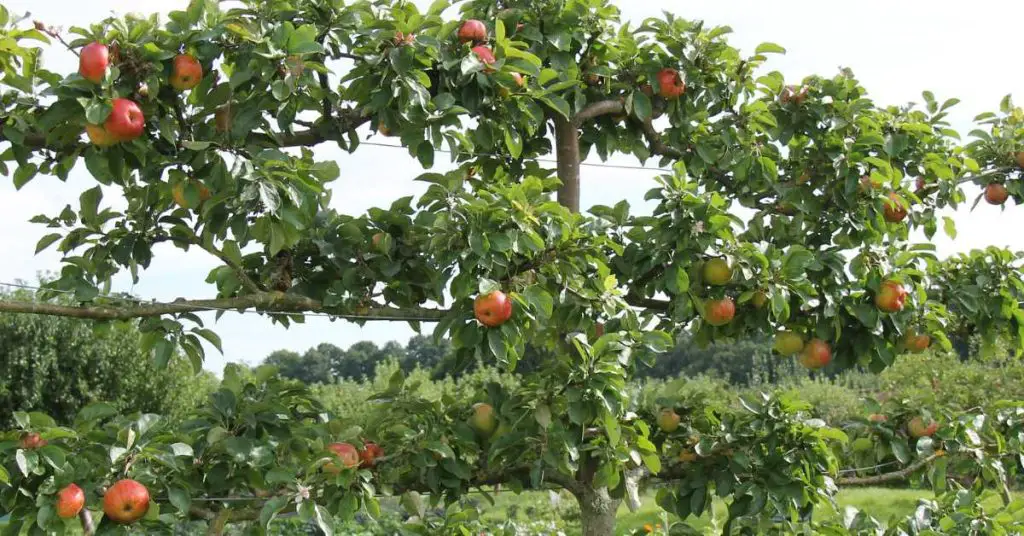
Idea: Espalier is a technique for training fruit trees to grow flat against a wall or trellis, creating a beautiful and space-saving garden feature. This method not only saves space but also makes it easier to prune, harvest, and protect the tree from pests and diseases.
Why: Espaliered fruit trees are perfect for small gardens because they can be grown vertically, taking up less horizontal space. They also add a decorative element to your garden, especially when the trees are in bloom or bearing fruit.
Materials: Fruit tree (dwarf or semi-dwarf varieties work best), support structure (such as a trellis or wires), pruning shears, ties or clips for securing branches.
Instructions:
- Choose Your Tree: Select a fruit tree suitable for your climate and garden size. Dwarf or semi-dwarf varieties are best for espalier.
- Prepare Your Support: Install a support structure, such as a trellis or wires, against a wall or fence where you want to espalier the tree.
- Prune and Train: Begin training the tree by pruning away excess branches and tying the remaining branches to the support structure in a desired pattern (such as horizontal tiers or a fan shape).
- Care and Maintenance: Regularly prune the tree to maintain its shape and encourage fruit production. Water and fertilize as needed, and protect the tree from pests and diseases.
Tips: Choose a sunny location for your espaliered tree to ensure it receives enough sunlight for fruit production. Consider planting flowers or herbs at the base of the tree to create a beautiful and functional garden space.
Can I Espalier Any Type of Fruit Tree?
Most fruit trees can be espaliered, but some are more suitable than others. Apples, pears, and peaches are popular choices for espalier due to their flexible branches and tolerance for pruning.
How Long Does It Take to Espalier a Fruit Tree?
The time it takes to espalier a fruit tree depends on the tree’s initial size and growth rate, as well as the desired shape. It can take several years to achieve a fully developed espaliered tree.
Do Espaliered Fruit Trees Produce Less Fruit?
Espaliered fruit trees can produce just as much fruit as their upright counterparts if properly cared for and pruned. In some cases, espaliered trees may even produce more fruit, as the branches are more exposed to sunlight and airflow.
Can I Espalier a Fruit Tree Against a Fence?
Yes, espaliered fruit trees can be trained to grow against a fence, wall, or other support structure. Just ensure that the support is sturdy enough to hold the weight of the tree and that the tree receives adequate sunlight.
5. Make use of Vertical Space with Hanging Gardens
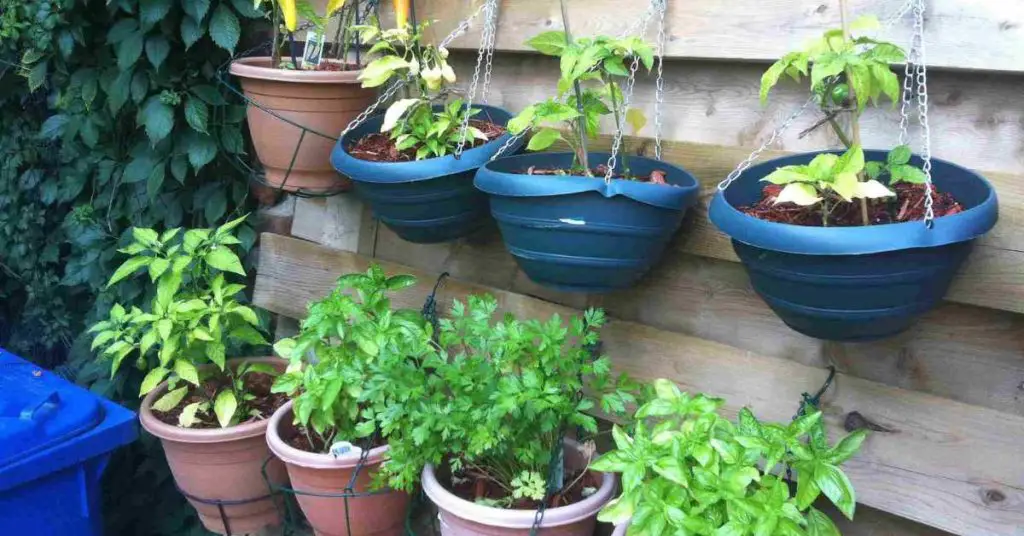
Idea: Hanging gardens utilize vertical space by suspending plants in containers from hooks, brackets, or other support structures. This allows you to add greenery to areas that may not have space for traditional garden beds, such as balconies, patios, or walls.
Why: Hanging gardens are perfect for small spaces because they allow you to create a lush and vibrant garden without taking up floor space. They also add a decorative element to your outdoor space, enhancing its beauty and charm.
Materials: Hanging baskets or containers, potting mix, plants, hooks or brackets for hanging.
Instructions:
- Choose Your Containers: Select hanging baskets or containers that are suitable for the size and type of plants you want to grow. Ensure they have drainage holes at the bottom.
- Prepare Your Containers: Fill the containers with a high-quality potting mix, leaving a few inches of space at the top for watering.
- Plant Your Plants: Plant your choice of plants in the containers, ensuring they are spaced appropriately and have adequate room to grow.
- Hang Your Gardens: Install hooks or brackets in your desired location and hang the containers from them. Ensure the containers are securely attached and can support the weight of the plants and soil.
Tips: Choose plants that are well-suited to hanging gardens, such as trailing vines, ferns, or flowering plants. Consider using a pulley system to easily raise and lower your hanging gardens for maintenance.
Can I Use Any Type of Container for Hanging Gardens?
You can use a variety of containers for hanging gardens, including traditional hanging baskets, decorative pots, or even repurposed items like buckets or mason jars. Just ensure they have drainage holes at the bottom.
How Do I Water Hanging Gardens?
Hanging gardens can dry out quickly, so it’s important to water them regularly. Check the soil moisture regularly and water when the top inch feels dry to the touch. Consider using a watering can with a long spout for easy watering.
What Plants Are Suitable for Hanging Gardens?
Many plants are well-suited to hanging gardens, including trailing vines like pothos and ivy, ferns, flowering plants like petunias and geraniums, and even herbs like mint and oregano.
Can I Hang Gardens Indoors?
Yes, hanging gardens can be hung indoors as long as they receive adequate sunlight and ventilation. Consider hanging them near windows or in well-lit areas to ensure your plants thrive.
6. Grow a Vertical Herb Garden
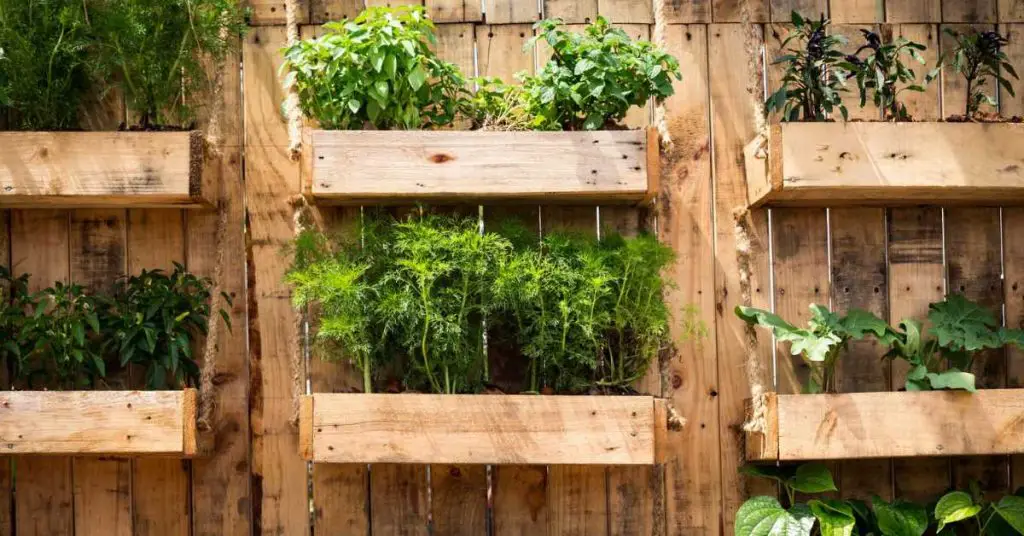
Idea: A vertical herb garden is a space-saving way to grow herbs in a small garden. By utilizing vertical space, you can grow a variety of herbs without taking up much ground space. This is perfect for small gardens, balconies, or even indoor spaces.
Why: Growing herbs vertically not only saves space but also makes it easier to harvest and maintain your herbs. Vertical herb gardens can also add a decorative element to your garden, with herbs cascading down a trellis or wall.
Materials: Vertical garden structure (such as a trellis or vertical planter), potting mix, herbs (such as basil, thyme, parsley, and mint).
Instructions:
- Choose Your Structure: Select a vertical garden structure that suits your space and the number of herbs you want to grow. This could be a trellis, vertical planter, or even a repurposed item like a shoe organizer.
- Prepare Your Structure: Fill the structure with potting mix, leaving space for the herbs to be planted.
- Plant Your Herbs: Plant your choice of herbs in the structure, ensuring they are spaced appropriately and have room to grow.
- Care and Maintenance: Water your herbs regularly, as vertical gardens can dry out quickly. Harvest herbs as needed and prune or trim them to promote healthy growth.
Tips: Consider planting herbs with similar water and sunlight needs together in the same vertical garden structure. This will make it easier to care for them and ensure they thrive.
Can I Grow Any Herb Vertically?
Many herbs are well-suited to vertical gardening, including basil, thyme, parsley, mint, oregano, and rosemary. Choose herbs that you frequently use in your cooking for the best results.
How Do I Water a Vertical Herb Garden?
Water your vertical herb garden regularly, as the soil can dry out quickly in vertical structures. Consider using a drip irrigation system or watering from the top and allowing the water to trickle down to each herb.
Do I Need to Fertilize My Vertical Herb Garden?
Regularly fertilizing your vertical herb garden can help ensure healthy growth and abundant harvests. Use a balanced fertilizer or compost tea every few weeks during the growing season.
Can I Grow Herbs Indoors in a Vertical Garden?
Yes, vertical herb gardens can be grown indoors as long as they receive adequate sunlight. Place your vertical herb garden near a sunny window or use grow lights to provide enough light for your herbs to thrive.
7. Raised Bed Gardening
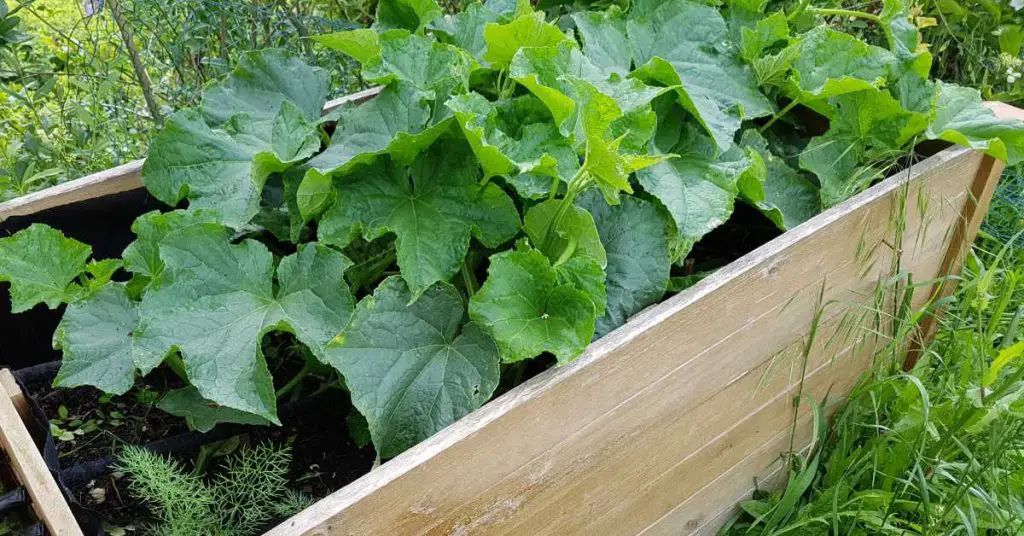
Idea: Raised bed gardening involves planting in beds that are raised above the ground, typically framed with wood or other materials. This method offers several benefits, including improved soil quality, better drainage, and easier access for planting, watering, and harvesting.
Why: Raised bed gardening is perfect for small gardens because it allows you to create a concentrated growing area with optimal soil conditions. It also helps to prevent soil compaction and allows for better control of weeds and pests.
Materials: Wood, bricks, or other materials for the raised bed frame, soil, compost, plants or seeds.
Instructions:
- Build Your Raised Bed: Construct a raised bed frame using wood, bricks, or other materials. Ensure the bed is at least 6 inches deep to accommodate plant roots.
- Fill Your Bed: Fill the raised bed with a mixture of soil and compost, ensuring it is well-draining and nutrient-rich.
- Plant Your Plants: Plant your choice of plants in the raised bed, following spacing guidelines for each plant.
- Care and Maintenance: Water your plants regularly, especially during dry periods. Add compost or fertilizer as needed to keep your plants healthy.
Tips: Consider adding a trellis to your raised bed for vertical gardening, allowing you to grow climbing plants like tomatoes or cucumbers.
Can I Use Any Type of Wood for a Raised Bed?
You can use a variety of woods for a raised bed, but cedar is often recommended due to its natural resistance to rot and insects. Avoid using treated wood, as it can leach chemicals into the soil.
How Deep Should a Raised Bed Be?
A raised bed should be at least 6 inches deep to accommodate plant roots. However, deeper beds of 12 inches or more are recommended for plants with deeper roots, such as tomatoes or carrots.
Do Raised Beds Need Drainage Holes?
Yes, raised beds should have drainage holes to prevent waterlogging. Ensure the holes are evenly spaced along the bottom of the bed to allow excess water to drain away.
Can I Place a Raised Bed on Concrete?
Yes, you can place a raised bed on concrete or other hard surfaces. Just ensure that the bed has a bottom to prevent soil from washing away and that it is well-draining.
8. Repurpose Pallets Into a Garden

Idea: A vertical pallet garden is a creative way to utilize vertical space by planting herbs, flowers, or vegetables in a pallet. This method is perfect for small gardens, balconies, or patios, and adds a unique and rustic element to your garden.
Why: Vertical pallet gardens are ideal for small spaces because they allow you to grow a variety of plants without taking up much ground space. They also provide good drainage and are easy to move if needed.
Materials: Pallet, landscape fabric, potting mix, plants.
Instructions:
- Prepare Your Pallet: Lay the pallet flat on the ground and cover the back and sides with landscape fabric, leaving the front open.
- Fill the Pallet: Fill the pallet with potting mix, ensuring it is evenly distributed and packed down.
- Plant Your Plants: Plant your choice of plants in the pallet, using the slats to hold the plants in place.
- Care and Maintenance: Water your pallet garden regularly, as vertical gardens can dry out quickly. Monitor for pests and diseases, and prune or trim as needed.
Tips: Consider painting or staining your pallet before planting to add a pop of color to your garden.
Can I Use Any Type of Pallet for a Vertical Garden?
You can use any type of pallet for a vertical garden, but it’s best to choose one that is in good condition and has not been treated with chemicals. Look for pallets with slats close together to hold the soil in place.
What Plants Are Suitable for a Vertical Pallet Garden?
Many plants are suitable for a vertical pallet garden, including herbs, flowers, and compact vegetables. Choose plants that are well-suited to your climate and the amount of sunlight your pallet garden receives.
How Do I Water a Vertical Pallet Garden?
Water your vertical pallet garden regularly, especially during dry periods. Consider installing a drip irrigation system or using a watering wand to ensure your plants receive adequate moisture.
Can I Lean or Hang the Pallet Against a Wall?
Yes, you can lean or hang the pallet against a wall or fence. Just ensure that it is securely attached and stable to prevent it from falling over.
9. Create a Spiral Herb Garden
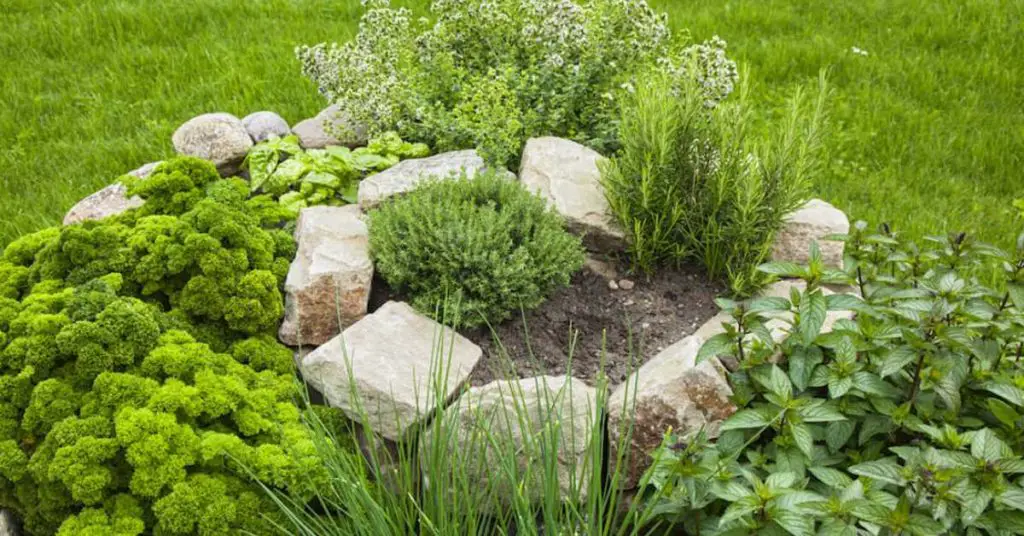
Idea: An herb spiral garden is a vertical garden design that consists of a spiral-shaped mound of soil with planting beds spiraling upwards. This design allows you to grow a variety of herbs in a small space while creating a visually striking and functional garden feature.
Why: Herb spiral gardens are ideal for small spaces because they maximize planting area and provide various microclimates for different herbs. The spiral shape creates different growing conditions, with the top of the spiral being drier and sunnier, and the bottom being more shaded and moist.
Materials: Rocks or bricks for the spiral structure, soil, compost, herbs.
Instructions:
- Build Your Spiral: Create a spiral-shaped mound of soil by stacking rocks or bricks in a spiral pattern. Ensure the spiral is sturdy and well-built.
- Fill Your Spiral: Fill the spiral with a mixture of soil and compost, ensuring it is well-draining and nutrient-rich.
- Plant Your Herbs: Plant your choice of herbs in the spiral, taking into account their sunlight and water requirements. Place herbs that require more sun and less water at the top of the spiral, and those that prefer shade and more moisture at the bottom.
- Care and Maintenance: Water your herb spiral regularly, especially during dry periods. Harvest herbs as needed and prune or trim them to promote healthy growth.
Tips: Consider adding a small pond or water feature at the bottom of the spiral to create a mini-ecosystem and attract beneficial wildlife.
Can I Use Any Type of Rocks or Bricks for an Herb Spiral?
You can use a variety of rocks or bricks for an herb spiral, but it’s best to choose ones that are porous and will retain heat, such as limestone or sandstone. Avoid using treated or painted materials, as they can leach chemicals into the soil.
What Herbs Are Suitable for an Herb Spiral?
Many herbs are well-suited to an herb spiral, including thyme, oregano, rosemary, basil, parsley, and cilantro. Choose herbs that you frequently use in your cooking for the best results.
How Do I Water an Herb Spiral?
Water your herb spiral regularly, as the spiral shape can cause water to drain quickly. Consider installing a drip irrigation system or watering from the top and allowing the water to trickle down to each level.
Can I Build an Herb Spiral on a Sloped Surface?
Yes, you can build an herb spiral on a sloped surface. In fact, the natural slope can help create the spiral shape, with the top of the spiral being higher than the bottom. Just ensure the spiral is stable and well-supported.
10. Grow In Window Boxes
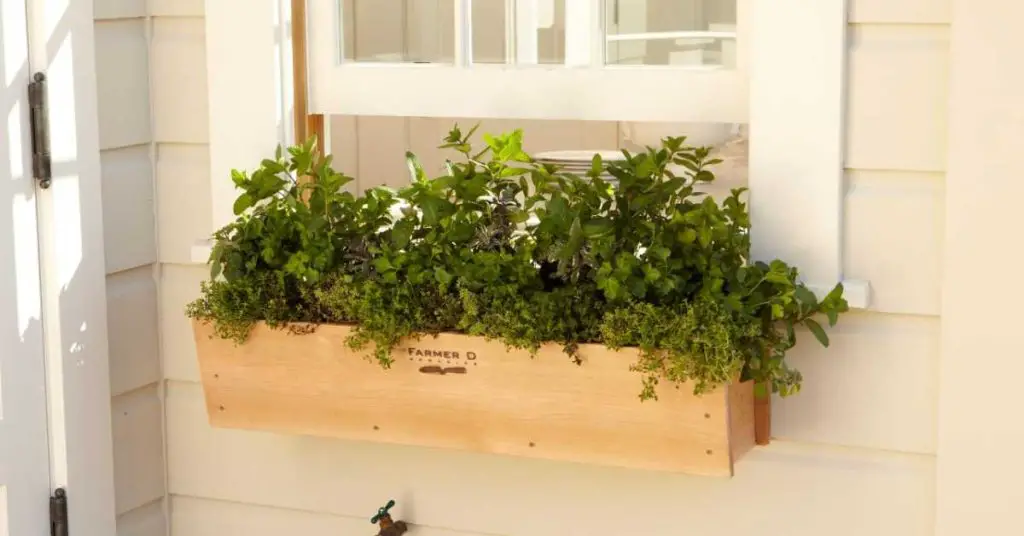
Idea: A window box garden is a container garden that is mounted outside a window, typically on a windowsill or railing. This type of garden is perfect for small spaces, as it allows you to add greenery and flowers to your home without taking up floor space.
Why: Window box gardens are ideal for small spaces because they can be easily customized to fit the size and style of your window. They also provide a beautiful view from inside your home and can improve the curb appeal of your property.
Materials: Window box planter, potting mix, plants or seeds.
Instructions:
- Choose Your Window Box: Select a window box that is suitable for the size and style of your window. Ensure the window box has drainage holes at the bottom.
- Prepare Your Window Box: Fill the window box with potting mix, leaving enough room at the top for the plants.
- Plant Your Plants: Plant your choice of plants in the window box, ensuring they are spaced appropriately and have room to grow.
- Mount Your Window Box: Mount the window box outside your window, ensuring it is securely attached to the windowsill or railing.
Tips: Consider using a mix of trailing plants, upright plants, and flowers to create a visually appealing window box garden.
Can I Use Any Type of Window Box for a Window Box Garden?
You can use a variety of window boxes for a window box garden, including plastic, metal, or wooden boxes. Choose a box that suits the style of your home and the amount of sunlight your window receives.
How Do I Water a Window Box Garden?
Water your window box garden regularly, as plants in containers can dry out quickly. Check the soil moisture regularly and water when the top inch feels dry to the touch.
What Plants Are Suitable for a Window Box Garden?
Many plants are well-suited to a window box garden, including trailing vines, flowers, and herbs. Choose plants that are suitable for the amount of sunlight your window receives and the size of your window box.
Can I Install a Window Box Garden Inside?
Yes, you can install a window box garden inside if you have a sunny window or adequate grow lights. Just ensure the window box is securely mounted and that any water drainage is properly managed.
11. Grow In Hanging Baskets
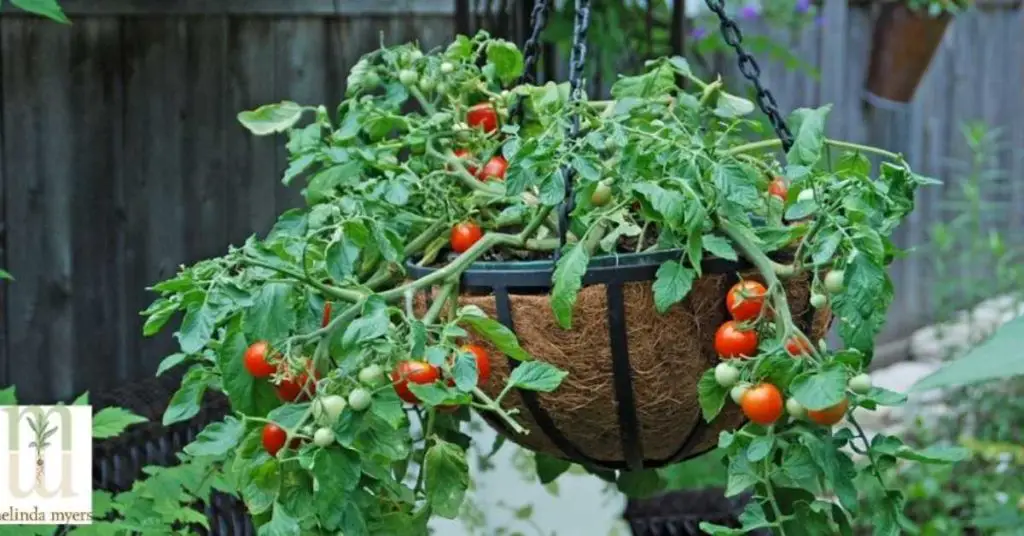
Idea: A hanging basket garden is a great way to add greenery and flowers to your small garden or balcony. By hanging baskets from hooks or brackets, you can maximize vertical space and create a beautiful display of plants.
Why: Hanging basket gardens are ideal for small spaces because they allow you to grow a variety of plants without taking up floor space. They also add a decorative element to your garden, and can be easily moved around to change the look of your space.
Materials: Hanging baskets, potting mix, plants or seeds, hooks or brackets.
Instructions:
- Choose Your Baskets: Select hanging baskets that are suitable for the size and style of your space. Ensure the baskets have drainage holes at the bottom.
- Fill Your Baskets: Fill the baskets with potting mix, leaving enough room at the top for the plants.
- Plant Your Plants: Plant your choice of plants in the baskets, ensuring they are spaced appropriately and have room to grow.
- Hang Your Baskets: Hang the baskets from hooks or brackets, ensuring they are securely attached and can support the weight of the baskets.
Tips: Consider using a mix of trailing plants, upright plants, and flowers to create a visually appealing hanging basket garden.
Can I Use Any Type of Basket for a Hanging Basket Garden?
You can use a variety of baskets for a hanging basket garden, including plastic, metal, or woven baskets. Choose baskets that suit the style of your space and the plants you want to grow.
How Do I Water a Hanging Basket Garden?
Water your hanging basket garden regularly, as plants in baskets can dry out quickly. Check the soil moisture regularly and water when the top inch feels dry to the touch.
What Plants Are Suitable for a Hanging Basket Garden?
Many plants are well-suited to a hanging basket garden, including trailing vines, flowers, and herbs. Choose plants that are suitable for the amount of sunlight your baskets receive and the size of your baskets.
Can I Hang Baskets Inside?
Yes, you can hang baskets inside if you have a sunny window or adequate grow lights. Just ensure the baskets are securely attached and that any water drainage is properly managed.
Frequently Asked Questions
Can I Incorporate a Small Water Feature into My Small Garden Layout?
Yes, you can incorporate a small water feature into your small garden layout. Consider options such as a small fountain, birdbath, or a simple water bowl.
Choose a location that complements your garden design and ensures easy access to water for maintenance.
Keep in mind the size of your garden and the scale of the water feature to maintain balance and prevent overcrowding.
How Do I Create a Sense of Privacy in My Small Garden?
To create a sense of privacy in your small garden, consider using tall plants, trellises with climbing plants, or fencing. Tall grasses or bamboo can provide a natural screen, while trellises allow you to grow vines or espaliered plants that provide both privacy and beauty.
Adding a pergola or arbor covered with vines can also create a secluded retreat within your garden.
What Are Some Creative Ways to Add Lighting to My Small Garden?
There are several creative ways to add lighting to your small garden. Consider using string lights or fairy lights to create a magical ambiance.
Solar-powered lights are a great eco-friendly option and can be placed along pathways or around plants. Lanterns, candles, or LED spotlights can also add drama and highlight specific features in your garden.
Can I Use Raised Beds or Containers for Growing Vegetables in My Small Garden?
Yes, raised beds or containers are excellent options for growing vegetables in a small garden. They allow you to control the soil quality, drainage, and placement of your plants.
Raised beds can be built to suit your space and can be easily accessed for planting, watering, and harvesting. Containers, such as pots or planters, are versatile and can be moved to optimize sunlight and space usage.
How Can I Make the Most of Vertical Space in My Small Garden Layout?
To make the most of vertical space in your small garden layout, consider using trellises, vertical planters, or hanging baskets. These structures allow you to grow plants upwards, saving valuable ground space.
You can also use walls or fences as vertical gardens by installing shelves or plant pockets. Choosing plants that naturally grow tall or can be trained to climb, such as vines or certain vegetables, can further maximize vertical space utilization in your garden.
Conclusion
Designing a small garden layout requires thoughtful planning and creativity to make the most of limited space. By considering factors such as functionality, plant selection, and aesthetic appeal, you can create a beautiful and functional garden that suits your needs and preferences.
Whether you’re looking to grow vegetables, herbs, flowers, or create a relaxing outdoor retreat, there are plenty of innovative ideas and techniques to help you maximize your small garden’s potential.
With the right approach, even the smallest of spaces can be transformed into a vibrant and inviting garden oasis.



